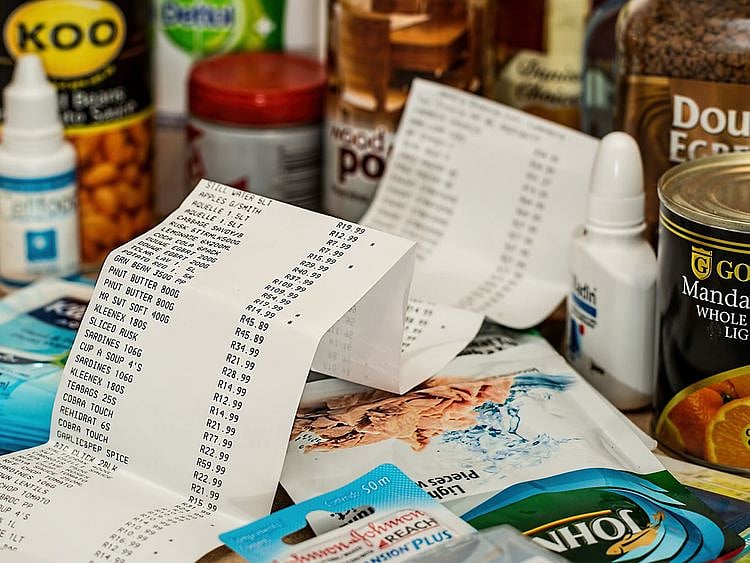Mapping out planned expenses in advance gives you time to save in smaller chunks
These are used for recurring costs like vacations, holiday gifts, membership renewals

In a given year, you likely have expenses that you know are coming – holiday gifts, the family vacation you take every summer, maintenance fees for your home or maybe membership renewals for different services you avail. But just because these costs are predictable doesn't mean you're always prepared.
If you are pulling from your emergency fund or using a credit card to cover predictable costs, you might consider using one or more ‘sinking funds’. A sinking fund is a savings account dedicated to a repeating expense that you fund gradually through regular payments. Sinking funds often have a deadline associated with them, but not always.
You can add sinking funds to your budget for expenses that come at the same time each year or to plan a big purchase you want but don't necessarily need – like a new couch for your living room or that piece of exercise equipment you've been eyeing for months.
Either way, sitting down with your calendar and noting upcoming expenses is a good way to get ahead of predictable costs and prevent unwanted debt or dipping into your emergency fund.
How do sinking funds compare with other savings accounts?
A sinking fund is different from other kinds of savings accounts – like an emergency fund or a traditional savings account – in a few ways. An “emergency fund is for true emergencies, and then your sinking fund is for a dedicated, expected planned purchase in the future that we know is coming,” said Miko Love, an accredited financial counsellor and creator of The Budget Mom, a website with resources to help people create and stick to a budget.
Because they have different purposes, separating sinking and emergency funds is wise.
“I do think it is kind of a good idea to separate out your emergency fund from a sinking fund just because otherwise it is a little bit tempting to dip into your emergency fund for things that aren't really emergencies,” said Madison Block , a marketing communications and programs associate with a non-profit credit counselling agency.
Sinking funds also differ from traditional savings accounts because they have a specific goal and target deadline. That helps you track progress on multiple goals while putting all your savings into one large pot can get confusing and make you lose sight of your goals.
The strategy behind sinking funds
Most sinking funds have a target date, and with this deadline “comes a strategic way to plan responsibly for that purchase,” said Love, who currently has 13 sinking funds. For example, if maintenance fees associated with homeownership are due in May each year, you can start planning ahead to have the cash on hand.
Let's take an example: If annual dues are Dh500 and you have six months to save, you need to put about Dh83 a month in your sinking fund. You can also use windfalls like cash refunds or gift money to boost these accounts and reach your goals faster.
Just keep in mind: Put money into sinking funds based on priority and necessity. Required fees or memberships should come before wants, like a new couch or exercise bike.
What is the difference between ‘needs’ and ‘wants’?
Needs are something that you must have, in order to live. On the contrary, wants are something that you wish to have, so as to add comforts in your life. Needs represents the necessities while wants indicate desires. Needs are important for the human being to survive.
If you have leftover money in a sinking fund, either keep it there so you're ahead of the game for next year, reallocate it to the next priority or pad your emergency fund, if needed.
Can you have too many sinking funds?
The trick with sinking funds is striking the right balance. “You can absolutely overcomplicate your finances by having too many of these sinking funds,” Block says. You might find that having multiple savings buckets to fund with each salary feels overwhelming. Setting up auto-pay might be one way to help streamline things. Some banks offer customers the ability to customise savings buckets within their accounts.
Figuring out your top few priorities and setting up sinking funds is a good start. “You probably don't really need a separate sinking fund for every single little expense that you are anticipating,” Block added. You can always add more sinking funds if you find this strategy works for you.
Are sinking funds right for you?
This is a low-risk strategy for saving for expected future costs. “I believe sinking funds can be for anybody no matter where they are with their finances,” said Love.
Managing sinking funds also “trains us to create healthy habits in our lives to prepare for the things that are putting us in debt,” Love added.
Sign up for the Daily Briefing
Get the latest news and updates straight to your inbox
Network Links
GN StoreDownload our app
© Al Nisr Publishing LLC 2025. All rights reserved.